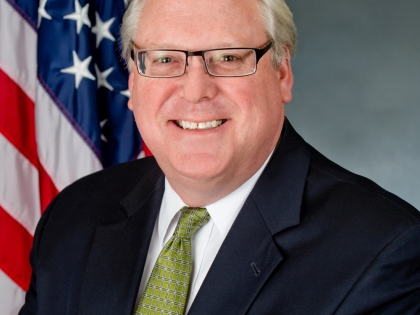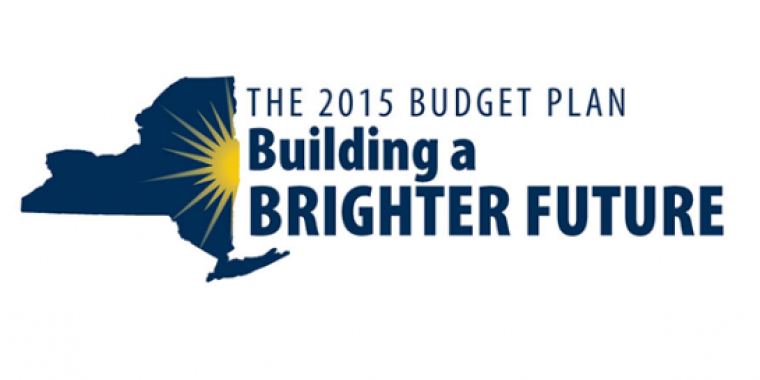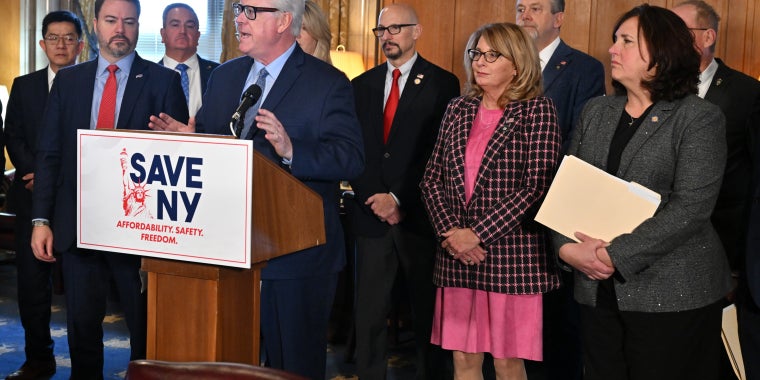
O'Mara: Senate budget plan stays focused on tax relief, Upstate job creation ~ Also includes support for local roads and local schools, next generation of farmers, veterans suffering from post-traumatic stress
Thomas F. O'Mara
March 12, 2015
-
ISSUE:
- Budget

Albany, N.Y., March 12—State Senator Tom O’Mara (R-C, Big Flats) said that the Senate’s one-house Budget Resolution, being acted on today, includes job-creating tax cuts, a stronger commitment to local schools and infrastructure, and assistance to key economic sectors including agriculture and small business.
"The Senate budget renews and revitalizes New York’s commitment to Upstate job growth, tax relief and community development,” said O’Mara. “The core proposals underpinning this fiscal strategy remain true to getting state and local taxpayers out from under America’s highest tax burden, creating a stronger commitment to Upstate across the board, and encouraging sustained private-sector job growth.”
O’Mara, the newly appointed chairman of the Senate Environmental Conservation Committee, said that the Senate budget plan seeks $200 million for the Environmental Protection Fund (EPF), a $38- million increase over last year and a move that conservation groups and environmental advocates have been calling for. The EPF, enacted in 2007, supports critical environmental initiatives including clean air and water projects and open space preservation. A new energy efficiency category would also be created.
The enactment of the Senate’s and Assembly’s respective 2015-16 Budget Resolutions this week sets the table for final negotiations with Governor Andrew Cuomo on a final 2015-16 state budget by the start of New York’s next fiscal year on April 1. These one-house budgets are largely symbolic actions but do stand as public statements of the priorities each legislative chamber will be staking out during the upcoming budget talks.
Among other highlights of the Senate plan is a rejection of a Cuomo idea to force seven Upstate regions compete for a $1.5-billion pot of economic development funding that would be divided among only three regions. Instead, O’Mara and his colleagues propose a $1.5-billion fund for upstate revitalization that will be spread evenly across every Upstate region, a new 1:1 water quality infrastructure matching grant program for Upstate communities to leverage additional funding from the state Clean and Drinking Water Revolving Loan funds, and funding for rural broadband.
“Upstate doesn’t need a game of winners and losers,” said O’Mara. “The Upstate economy needs an across-the-board, broad-based strategy that holds out hope for every business, every community and every worker. That’s what our plan seeks to accomplish.”
O’Mara said that the Senate’s budget plan advances a broader property tax cut plan than the circuit breaker plan sought by Cuomo. It would make the 2% property tax cap permanent and take additional actions that he and other Upstate New York senators believe are central to reviving the Upstate economy. In particular, the plan includes areas of tax relief that O’Mara has been pushing over the past few years, including the following cuts targeted to small businesses:
-- increasing the business income tax exemption from 5 to 10 percent for business and farms that file under the personal income tax, have less than $500,000 in business income and at least one employee;
-- expand the small corporation rate reduction to save more than 40,000 businesses a total of $40 million annually; and
-- the elimination this year of the higher 18-a utility surcharge first imposed on New Yorkers in 2009, a state-imposed cost that hits farmers, manufacturers and senior citizens facing high energy expenses especially hard.
“The Senate budget would help produce a business climate that invites private-sector job growth, welcomes businesses and industries, and keeps moving toward long-term economic security for workers and their families. We have to send a stronger message that New York’s serious about economic growth and job creation,” said O’Mara, noting that New York is still recognized as a state with one of the worst business tax climates in the nation.
Other highlights of the Senate budget include:
-- a $50-million increase in funding for the Consolidated Highway Improvement Program (CHIPS) for localities, and the creation of a new, five-year, $1.5-billion road and bridge capital program to further address infrastructure needs.
Last week O’Mara and Assemblyman Phil Palmesano (R,C,I-Corning) organized a bipartisan group of 114 senators and members of the Assembly who joined county and town highway superintendents and other local leaders from throughout the state to call for increased support for local roads and bridges. They noted that local roads and bridges account for 87% of the roads, 52% of the bridges, and 48% of the vehicle mileage logged in New York State.
“The improvement and upkeep of local roads and bridges is a wise use of taxpayer dollars. It’s an investment in economic growth and job creation throughout the Southern Tier and Finger Lakes regions, and all across New York,” said O’Mara, a member of the Senate Transportation Committee;
-- an overall increase of $1.9 billion in state aid to public schools, including the complete elimination of the damaging and highly controversial Gap Elimination Adjustment (GEA) that has cost school districts locally and statewide billions of dollars in state aid over the past several years.
“The elimination of the unfair and detrimental Gap Elimination Adjustment is a top priority for our local school districts, and it will be a top priority for Senate Republicans throughout this year’s budget negotiations. It’s a priority I strongly share. It’s time to completely eliminate the GEA,” said O’Mara. The GEA was originally enacted in 2009-2010 by then-Governor David Paterson, and when both houses of the Legislature were under Democratic control, as a way to help the state close a multi-billion-dollar budget gap. Republicans in the Senate at that time unanimously rejected the move as a budget-balancing scheme that would hurt local school districts;
-- increasing community college base aid by $100 per full-time equivalent student (FTE);
-- funding for the Research & Recognition Project, which O’Mara and several of his Senate colleagues have been seeking to support the expansion of a groundbreaking treatment program for military servicemen and servicewomen suffering from Post-traumatic Stress Disorder (PTSD).
The project’s Executive Director is Dr. Frank J. Bourke of Corning, a clinical psychologist with more than three decades of experience in the field. O’Mara said that he’s worked with Bourke over the past several years to help advance and promote the Research & Recognition Project in support of veterans and military families. It’s an innovative, cutting-edge treatment that has shown exciting and successful advances in the treatment of PTSD among veterans in New York State over the past several years at Fort Drum and other state facilities where it’s being used, particularly in the mid-Hudson Valley.
“The Research and Recognition Project has demonstrated effective advancements in this field. I’m a believer in this program. Through the additional financial support we’re seeking, it could truly begin turning around the lives of more and more of our veterans and, by extension, the lives of their families and loved ones in New York State and nationally,” said O’Mara; and
-- additional provisions of the Senate’s “Grown in New York” plan, which O’Mara cosponsors, a comprehensive legislative program blending tax and regulatory reform incentives, low-interest loans and grants, an expanded student loan forgiveness program and other initiatives to help existing farmers stay on the land and encourage more young men and women to consider careers in agriculture.
The Legislature will now convene public conference committees to settle legislative differences on this year’s budget and reach agreements with Cuomo on a final budget. The upcoming conference committees can be watched live on the following Senate website: http://www.nysenate.gov/live_today
Find the full Senate Budget Resolution HERE.
Share this Article or Press Release
Newsroom
Go to Newsroom


